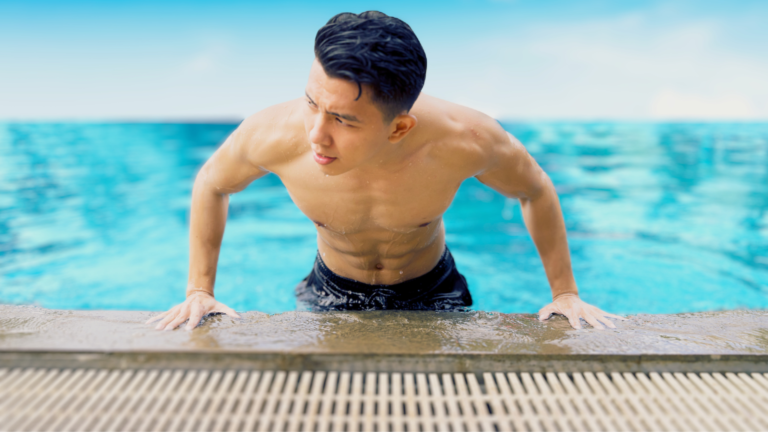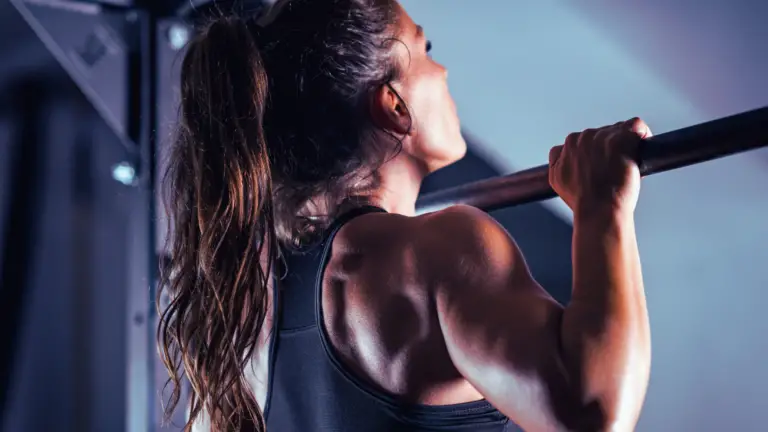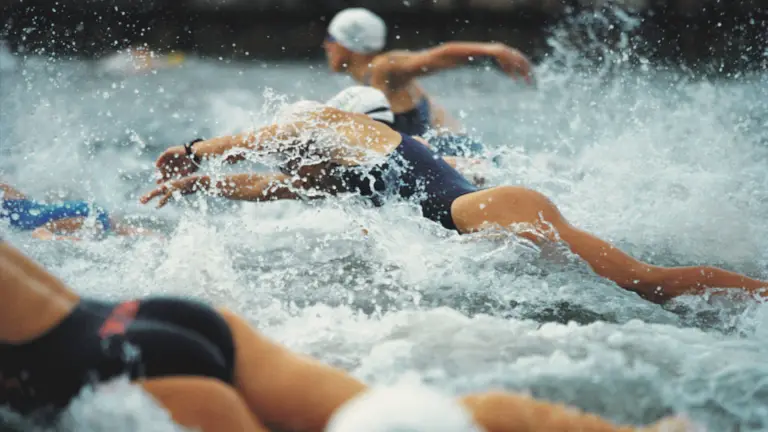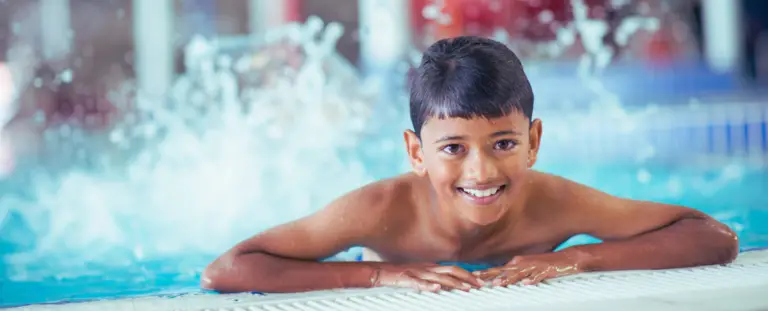Hey there, fellow swimmers! If there’s one thing I’ve learned from my time as a swimmer and coach, it’s this: breathing is the backbone of swimming. Whether you’re a newbie trying to get the hang of freestyle or a competitive swimmer aiming for gold, mastering the art of breathing can make or break your performance. In this article, I will cover 7 breathing exercises for swimmers of all calibers. So, let’s dive right in!
The Benefits of Proper Breathing for Swimmers
Swimming is not just about powerful strokes and perfect technique. It’s about the rhythm, the dance between your body and the water. And at the heart of this dance is your breath.
Importance of breathing in swimming: Every stroke, every turn, every push off the wall is influenced by your breathing pattern. A well-timed breath can give you the boost you need to surge ahead, while a missed breath can leave you gasping and throw off your rhythm.
The connection between proper breathing and enhanced performance: Proper breathing ensures a steady supply of oxygen to your muscles, allowing you to swim faster and longer.
The Science Behind Breathing
Let’s get a bit nerdy here. 🤓
How the lungs work during swimming: When you inhale, air rich in oxygen fills your lungs. As you exhale, you release carbon dioxide. This exchange happens in tiny air sacs in the lungs called alveoli. When swimming, especially during intense freestyle sprints, your body needs more oxygen, making each breath super-efficient.
The role of oxygen in muscle function and stamina: Your muscles need oxygen to produce energy. The more oxygen they have, the better they function. This is why breathing exercises for swimmers are so crucial. They increase your lung capacity, ensuring that your muscles get all the oxygen they need.
Dryland Breathing Exercises for Swimmers
Dryland training is often the unsung hero in a swimmer’s regimen. While the pool is our primary battleground, the land is where we build some of our most crucial strengths, especially when it comes to breathing. Dryland breathing exercises play a pivotal role in enhancing a swimmer’s in-water performance, offering a unique blend of physical and mental benefits.
Every elite swimmer knows the value of dryland training. It complements in-pool sessions, targeting specific muscle groups and refining techniques that can be challenging to address in the water. Among these, breathing exercises stand out for their direct impact on in-water performance.

The Significance of Dryland Breathing Exercises
Building Lung Capacity and Endurance: Just as runners train their legs, swimmers must train their lungs. Dryland exercises can significantly increase lung capacity, allowing swimmers to take in more oxygen with each breath.
Enhancing Breath Control and Rhythm: A consistent breathing rhythm can be the difference between a good swim and a great one. Dryland exercises help swimmers find and maintain this rhythm, even during intense races.
Preparing the Body and Mind: Mental preparation is just as crucial as physical readiness. Breathing exercises can calm the mind, reduce pre-race jitters, and improve focus.
This rhythmic technique involves inhaling, holding, exhaling, and pausing, all for equal durations.
How To Practice:
- Start by finding a quiet spot. Sit comfortably and close your eyes. Inhale deeply for 4 seconds, hold for another 4, exhale for 4, and then pause for 4 seconds before starting the cycle again.
Benefits:
- Stress Reduction: A calm mind can significantly improve race performance.
- Increased Focus: Training the mind to concentrate on the breath can enhance overall focus.
- Enhanced Lung Function: Regular practice can lead to noticeable improvements in lung capacity.
Deep breathing, often referred to as abdominal or belly breathing, is a fundamental technique that emphasizes full oxygen exchange.
How to Practice:
- Sit or lie down in a comfortable position. Breathe in deeply through the nose, allowing your chest and abdomen to rise. Exhale slowly through the mouth, pushing out as much air as possible.
Benefits:
- Improved Oxygen Supply: More oxygen reaches the bloodstream.
- Relaxation: Deep breathing can reduce stress and anxiety.
- Lung Muscle Strengthening: Engages and strengthens the muscles involved in breathing.
Involves inhaling through the nose and exhaling slowly with puckered lips.
How to:
- Inhale deeply through the nose. Pucker your lips as if you’re about to whistle, and exhale slowly. This technique can be especially beneficial after physical exertion.
Benefits:
- Increases Oxygen: More oxygen reaches the alveoli in the lungs.
- Controlled Exhalation: Helps in maintaining a steady breathing rhythm.
Challenges that involve holding your breath for extended periods.
How to Practice:
- After a deep inhalation, hold your breath. Start with shorter durations and gradually increase as you become more comfortable.
Benefits:
- Increased Lung Capacity: Regular practice can expand the lungs’ volume.
- Mental Toughness: Holding your breath can be challenging, building mental resilience over time.
A focus on engaging the diaphragm, promoting deeper and more efficient breaths.
How to:
- Lie down on a flat surface. Place one hand on your chest and the other on your abdomen. As you breathe in deeply through the nose, ensure your abdomen rises more than your chest. This indicates you’re engaging the diaphragm.
Benefits:
- Enhanced Lung Efficiency: The diaphragm’s full engagement ensures maximum oxygen intake.
- Relaxation: Helps in reducing stress and anxiety.
There are various devices, like respiratory trainers, that can enhance dryland breathing exercises.
How to Practice:
- Always follow the manufacturer’s guidelines. Start with shorter sessions and gradually increase the duration as you become more accustomed to the device.
Benefits:
- Enhanced Training: Devices can provide resistance, making exercises more challenging.
- Targeted Muscle Work: Specific devices can target either inhalation or exhalation muscles.
Dryland breathing exercises are more than just a supplement to in-pool training—they’re a cornerstone of elite swimming preparation. By dedicating time to these exercises, swimmers can ensure they’re not just strong in the water but also efficient, focused, and mentally prepared for any challenge.
In-Pool Breathing Drills
Swimming is as much about rhythm as it is about technique. And when it comes to establishing that rhythm, breathing plays a pivotal role. While dryland exercises help prepare our lungs, it’s the in-pool drills that truly refine our breathing technique. Let’s dive into some essential in-pool breathing drills that can elevate your swimming game.
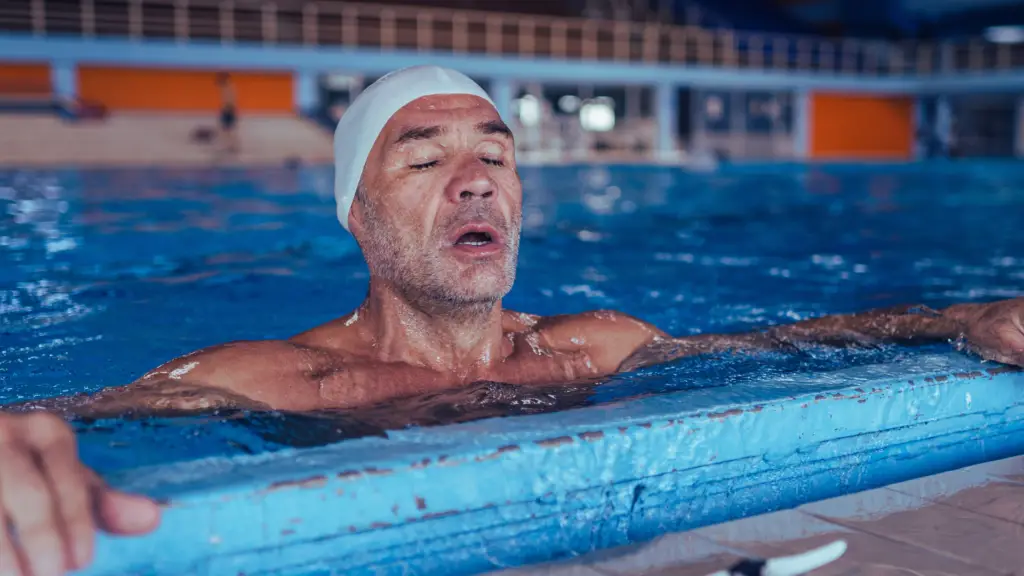
This technique involves alternating your breathing between both sides, typically every 3 strokes.
How To Practice:
- Start by swimming a short distance, focusing on breathing every 3 strokes. As you get comfortable, increase your distance, ensuring you maintain a consistent rhythm.
Benefits:
- Balance in the Water: Breathing on both sides ensures you develop a symmetrical stroke, preventing imbalances in muscle development.
- Equal Muscle Development: It promotes even strength on both sides of the body.
- Open Water Spotting: For those who venture into open waters, bilateral breathing aids in better navigation and spotting.
These drills challenge you to hold your breath for extended periods, pushing your lungs to their limits.
How to Practice:
- After a good warm-up, swim half a pool length without breathing. As you progress, try to extend the distance gradually. Always ensure safety and never push yourself to the point of discomfort.
Benefits:
- Increased Lung Capacity: Over time, you’ll notice an improvement in how long you can hold your breath, translating to better stamina during swims.
- Mental Toughness: Holding your breath, especially during intense swims, requires mental strength. This drill helps build that resilience.
Breathing patterns help regulate oxygen intake, ensuring muscles get a consistent supply. Here, you’ll focus on breathing on one side, typically every 2 strokes.
How to:
- Swim a lap focusing on breathing every 2 strokes. Ensure you maintain a steady pace and rhythm throughout.
Benefits:
- Ideal for Sprinters: This technique ensures you’re fueling your muscles with a constant supply of oxygen, which is crucial for short, intense swims.
Breathing patterns help regulate oxygen intake, ensuring muscles get a consistent supply. Here, you’ll focus on breathing on one side, typically every 2 strokes.
How to:
- Swim a lap focusing on breathing every 2 strokes. Ensure you maintain a steady pace and rhythm throughout.
Benefits:
- Ideal for Sprinters: This technique ensures you’re fueling your muscles with a constant supply of oxygen, which is crucial for short, intense swims.
These tools are designed to keep your head submerged, allowing you to focus on your stroke technique without turning your head to breathe.
How to Practice:
- Incorporate snorkels in your regular swim drills. For advanced swimmers, add snorkel caps to intensify the training.
Benefits:
- Consistent Head Position: Using a snorkel ensures your head remains in a steady position, aiding in a more streamlined swim.
- Enhanced Lung Training: Snorkel caps restrict airflow, challenging your lungs and increasing their capacity over time.
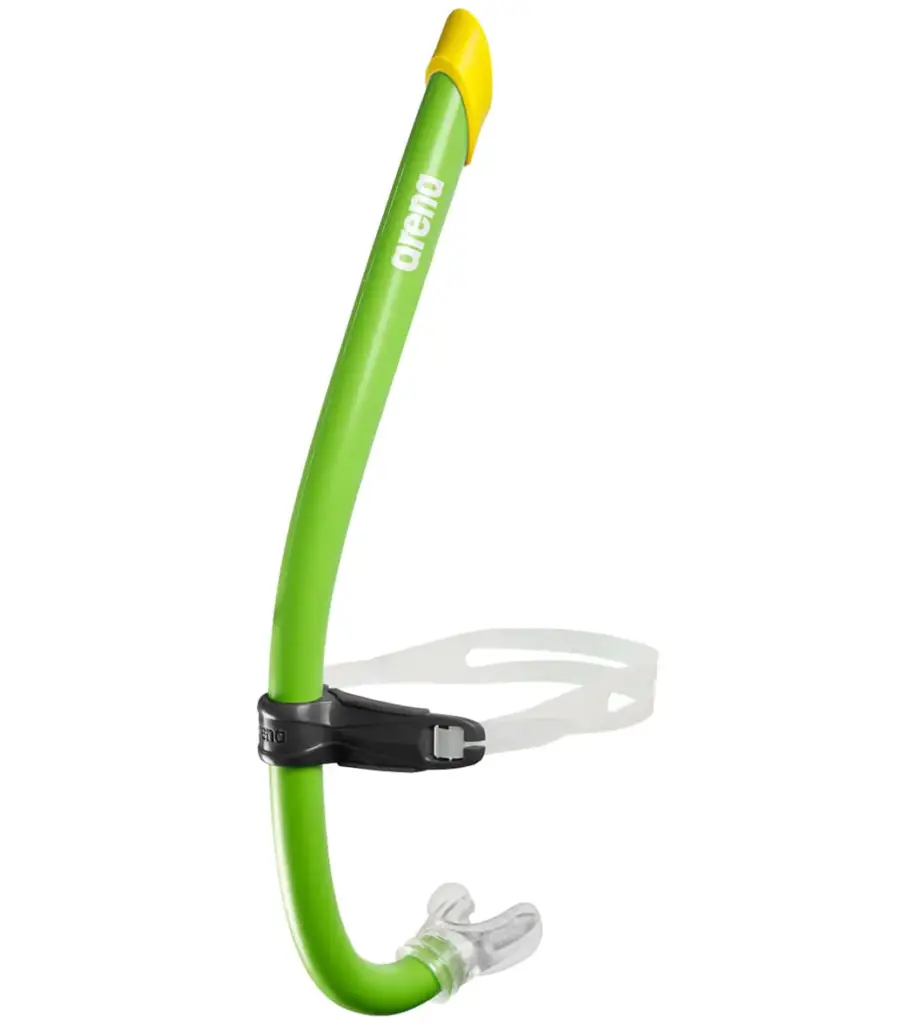
Arena Pro III Swim Snorkel
My favorite swim snorkel, designed for performance swimmers seeking improved technique and breath control. Enhance your swimming experience with this high-quality snorkel.
Breathing is the essence of swimming. While strength, technique, and stamina are crucial, it’s the rhythm of your breath that often determines your performance. With consistent practice of these in-pool breathing drills, you’ll find yourself swimming more efficiently, with better stamina and greater confidence in your breath control. Dive in and make every breath count!
Respiratory Training Devices
In the realm of competitive swimming, every edge counts. While most swimmers focus on refining their strokes, turns, and starts, there’s an often-overlooked aspect that can significantly boost performance: respiratory training. As mentioned briefly above, I want to introduce you further to the world of respiratory training devices, tools specifically designed to challenge and enhance your lungs and breathing muscles.
What are Respiratory Training Devices?
Respiratory training devices are specialized tools that provide resistance to your breathing, making your respiratory muscles work harder. Think of them as weights for your lungs. Just as weightlifters use dumbbells and barbells to build muscle strength, swimmers can use these devices to enhance their respiratory muscle strength and endurance.
Types of Respiratory Training Devices
Respiratory training devices are like gym equipment for your lungs. They provide resistance, making your respiratory muscles work harder.
Inspiratory Muscle Trainers (IMT): These devices focus on the muscles you use to inhale. By providing resistance during inhalation, they challenge the diaphragm and other muscles involved in the process, strengthening them over time.
Expiratory Muscle Trainers (EMT): Targeting the muscles used during exhaling, these devices help in improving breath control, especially when it comes to forcefully expelling air from the lungs.
Combined Trainers: Some devices offer both inspiratory and expiratory resistance, giving a comprehensive workout to the entire respiratory system.

Resistance Breathing Muscle Trainer
Check out my favorite Resistance Breathing Muscle Trainer, a game-changer for swimmers! Strengthen your breathing muscles and improve lung capacity, leading to enhanced endurance in the water. Take your swimming performance to new heights and experience the benefits of better breathing with this fantastic device!
Benefits of Using Respiratory Training Devices:
Enhanced Lung Capacity: Regular use can increase the volume of air your lungs can hold, allowing for deeper and more efficient breaths during swims.
Improved Stamina: With stronger respiratory muscles, you’ll find that you can maintain your pace for longer distances without feeling as winded.
Faster Recovery: Efficient breathing helps in faster recovery during intervals, allowing you to maintain peak performance throughout your training sessions or races.
Mental Edge: Mastering the use of these devices and incorporating them into your training regimen can give you a psychological advantage, knowing you’ve done everything to optimize every aspect of your performance.
Versatility: Many of these devices are portable, allowing swimmers to train their respiratory muscles anywhere, whether they’re at home, traveling, or warming up before a competition.
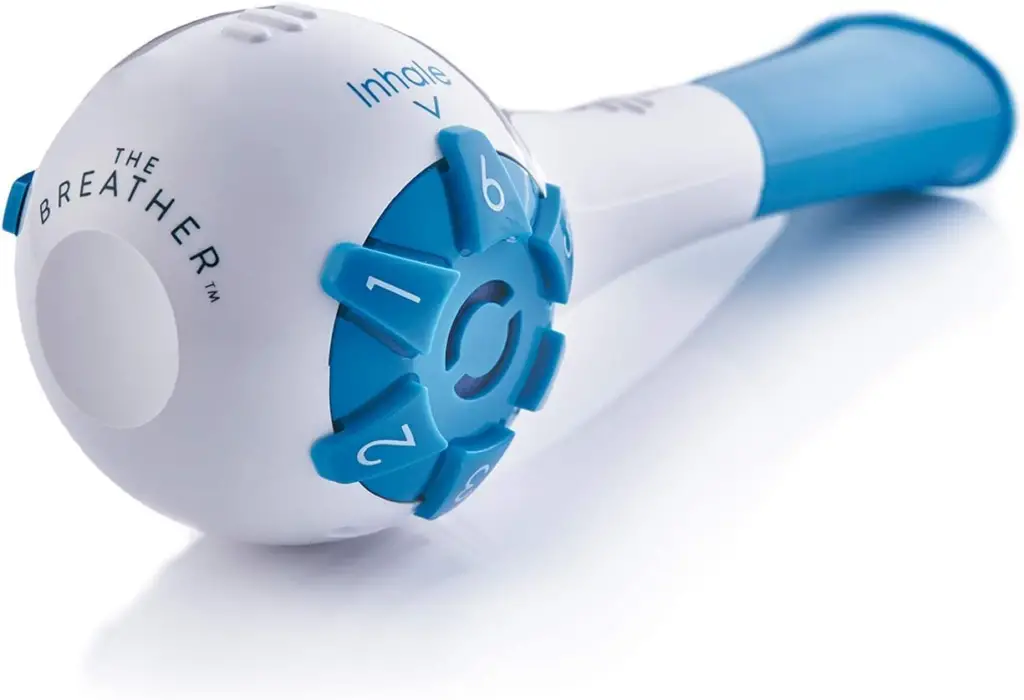
Natural Breathing Exercise Trainer
My best budget choice for enhancing your respiratory fitness. Trusted by athletes, respiratory therapists, and fitness enthusiasts, this air-powered device with independent inhalation and exhalation control promotes belly breathing for optimal respiratory health.
Innovative Tools for Elevating Breath Training
In the quest for swimming excellence, every breath counts. While natural techniques and traditional drills form the foundation of breath training, the modern swimmer has an arsenal of innovative tools at their disposal. These tools, ranging from high-tech devices to simple household items, are designed to challenge, refine, and optimize the breathing process. They not only enhance lung capacity and control but also bring a fresh perspective to training routines. In this section, we’ll explore some of these game-changing tools and delve into how they can revolutionize your breath training journey.
Utilizing mirrors during breathing exercises offers a unique visual feedback mechanism. By observing yourself in real-time, you can gain insights into your breathing patterns, posture, and technique. This self-awareness can be instrumental in making necessary adjustments and ensuring that each breath is executed optimally.
How To Practice:
- Position a large mirror in front of your practice area. As you engage in your breathing exercises, regularly glance at the mirror. Focus on your posture, the rise and fall of your chest or abdomen, and the rhythm of your breaths. Make adjustments as necessary to ensure optimal breathing technique.
Benefits:
- Immediate Feedback: Mirrors provide real-time visual feedback, allowing swimmers to instantly correct their posture and technique.
- Enhanced Self-awareness: Observing oneself can lead to a better understanding of one’s breathing patterns and habits.
- Consistency in Practice: Regularly using mirrors can help in maintaining consistency in breathing techniques, ensuring that the right methods are always employed.
Incorporating mixing bowls filled with water into breathing exercises can simulate the sensation of being submerged, offering a controlled environment for practice outside the pool. This technique is particularly beneficial for beginners or those looking to refine specific aspects of their breathing without the distractions of full swimming motions.
How to Practice:
- Fill a mixing bowl with water. Stand or sit comfortably, then take a deep breath and submerge your face into the water. Focus on your exhaling technique, watching the bubbles rise, or practice holding your breath. Lift your face, breathe normally, then repeat the exercise, adjusting based on what you’re aiming to practice or improve.
Benefits:
- Controlled Environment: Allows swimmers to focus solely on their breathing technique without other swimming elements.
- Builds Confidence: For beginners, this method can serve as a stepping stone, helping them get accustomed to the sensation of water on their face.
- Versatility: Can be used to practice various breathing techniques, from controlled exhales to bubble blowing.
Check out our Swimming Workouts & Training category to discover more effective drills and exercises that will take your swimming skills to the next level. Whether you’re a beginner or a seasoned swimmer, these training resources will help you achieve your aquatic goals and excel in the pool. 🏊♂️💪
Common Breathing Challenges and Solutions
Swimming is not without its challenges, especially when it comes to breathing. But for every challenge, there’s a solution. Let’s tackle some common ones.
Gasping for Air: Causes and Remedies
We’ve all been there. Pushing hard, trying to finish that last lap, and suddenly you’re gasping for air.
| Category | Issue/Technique | Description |
|---|---|---|
| Causes | Inefficient Breathing Technique | Not exhaling fully or holding your breath for too long. |
| Lack of Rhythm | Not establishing a consistent breathing pattern. | |
| Remedies | Bilateral Breathing | This technique ensures you’re getting enough oxygen and helps maintain balance. |
| Breathing Drills | Incorporate more breathing drills into your training to improve technique and stamina. |
CO2 Buildup: Understanding and Managing It
That burning sensation in your lungs? That’s CO2 buildup, and it’s a sign that you need to tweak your breathing.
| Category | Issue/Technique | Description |
|---|---|---|
| Causes | Inefficient Breathing Technique | Not exhaling fully or holding your breath for too long. |
| Lack of Rhythm | Not establishing a consistent breathing pattern. | |
| Remedies | Bilateral Breathing | This technique ensures you’re getting enough oxygen and helps maintain balance. |
| Breathing Drills | Incorporate more breathing drills into your training to improve technique and stamina. |
The Debate: Breathing Through the Nose vs. Mouth
Ah, the age-old debate. I’ve had countless discussions about this with fellow coaches and swimmers.
| Breathing Type | Pros | Cons |
|---|---|---|
| Nose Breathing | – Filters and humidifies the air. – Helps in maintaining a more streamlined position. | – Might not provide as much oxygen, especially during intense activity. |
| Mouth Breathing | – Allows for more air intake, beneficial during sprints. | – Can lead to dry mouth and doesn’t filter the air. |
My Take: Both methods have their merits. I recommend training with both and using whichever feels more comfortable and efficient for your swimming style.
FAQs
Conclusion
We dove deep into the world of breathing in swimming. From the science behind each breath to advanced techniques and tools, it’s clear that mastering your breath is paramount.
Remember, swimming is as much about the rhythm of your breath as it is about the strokes of your arms and legs. With consistent practice and training, you can turn your breath into your most potent ally in the water. Until next time, happy swimming!

